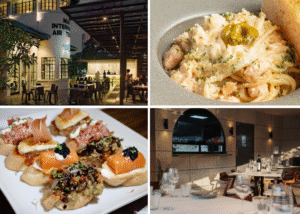Top 5 Benefits of Using an Online Ordering System for Your Singapore Restaurant
Singapore’s F&B scene is one of the most competitive in Asia-Pacific, with a myriad of restaurants vying for customer attention amid multiple delivery aggregators such as GrabFood and Foodpanda. To stay ahead, adopting a restaurant online ordering system is no longer optional but essential. This technology helps restaurant owners streamline operations, improve order accuracy, and create superior customer experiences.
1. Improved Order Accuracy and Streamlined Operations
One of the biggest challenges Singapore restaurants face is juggling orders across various delivery platforms while maintaining accuracy and efficiency.
Integration with OMS and POS Systems
Integrating an Online Ordering System (OMS) with your Point of Sale (POS) and Kitchen Display System (KDS) creates a seamless flow from customer order to kitchen preparation. This minimizes manual entry errors common with phone orders or fragmented aggregator apps, ensuring that:
- Orders are captured correctly the first time
- Kitchen staff receive clear, organized order information
- Inventory and billing sync in real-time
Local Case Study: A Singapore Restaurant’s Experience
A well-known Singaporean F&B brand integrated their OMS with their POS and saw a 25% increase in order accuracy within three months. This led to faster kitchen throughput and significantly fewer order disputes, boosting overall operational efficiency and customer trust.
2. Faster Service and Reduced Wait Times
Long queues and extended wait times can deter potential customers, especially during Singapore’s busy lunch and dinner peaks.
Real-Time Order Tracking and Kitchen Management
An OMS provides real-time dashboards that track order status from placement to preparation and dispatch. Staff can prioritize tasks dynamically, reducing bottlenecks and improving workflow management.
Example: Handling Peak Hours Efficiently in Singapore
A local hawker-style restaurant used integrated online ordering to schedule prep times and space out deliveries effectively during peak hours. This approach reduced wait times by 30%, improving both delivery punctuality and dine-in service.
3. Enhanced Customer Satisfaction and Loyalty
The combination of increased order accuracy and quicker service directly impacts customer satisfaction.
Personalised Promotions and Offers
The data collected through online orders enables restaurants to tailor promotions based on customer preferences and ordering habits. Personalized offers encourage repeat business and foster stronger customer loyalty.
Collecting and Utilizing Customer Feedback
In-built review and rating features integrated into ordering platforms allow restaurants to get real-time feedback. Acting on these insights demonstrates responsiveness, further enhancing the customer experience.
4. Reduction in Order Cancellations and Miscommunications
Clear, digital menus with photos, descriptions, and updated availability minimize misunderstandings that cause cancellations.
Handling Multiple Aggregators Efficiently
A centralized OMS consolidates orders from GrabFood, Foodpanda, and others, effectively reducing overbooking and order conflicts. This allows restaurant staff to manage volume without sacrificing quality or customer trust.
5. Valuable Insights Through Real-Time Reporting
Data analytics from the OMS and POS integrations empower restaurant owners with actionable insights.
Sales and Customer Behaviour Analytics
Tracking sales trends and customer preferences helps restaurants optimize menu offerings, manage inventory smartly, and design targeted marketing campaigns – all crucial for maintaining profitability in Singapore’s dynamic market.
Conclusion: Why Singapore Restaurants Should Invest in Online Ordering Systems
In Singapore’s competitive and fast-paced F&B environment, adopting an integrated restaurant online ordering system offers tangible benefits: increased order accuracy, reduced wait times, enhanced customer satisfaction, fewer cancellations, and powerful real-time insights. Leveraging these technologies enables restaurants to thrive despite the challenges posed by multiple delivery aggregators and delivery logistics. It’s time to invest in smarter, streamlined operations to secure your place at the forefront of Singapore’s dining scene.
Frequently Asked Questions
How can an online ordering system improve order accuracy?
An online ordering system automates order entry and integrates directly with your POS and order management systems, significantly reducing human errors common in manual phone orders. This leads to more accurate orders, minimizing mistakes that affect customer satisfaction.
Which are the popular online ordering platforms in Singapore?
Popular platforms include GrabFood, Foodpanda, Deliveroo, and others. Integrating these through a centralized online ordering system helps restaurants efficiently manage orders across multiple aggregators without overlap or overbooking.
Can online ordering systems help reduce restaurant wait times?
Yes. Online ordering allows customers to place orders ahead of time, enabling kitchens to prepare meals more efficiently. Real-time order tracking and kitchen management tools help optimize workflow and reduce customer wait times both for delivery and dine-in.
How does real-time reporting benefit restaurant operations?
Real-time reporting provides valuable data on sales, customer behaviour, and operational bottlenecks. Restaurants can use these insights to make informed decisions about staffing, inventory, menu adjustments, and personalised marketing to improve overall performance.



